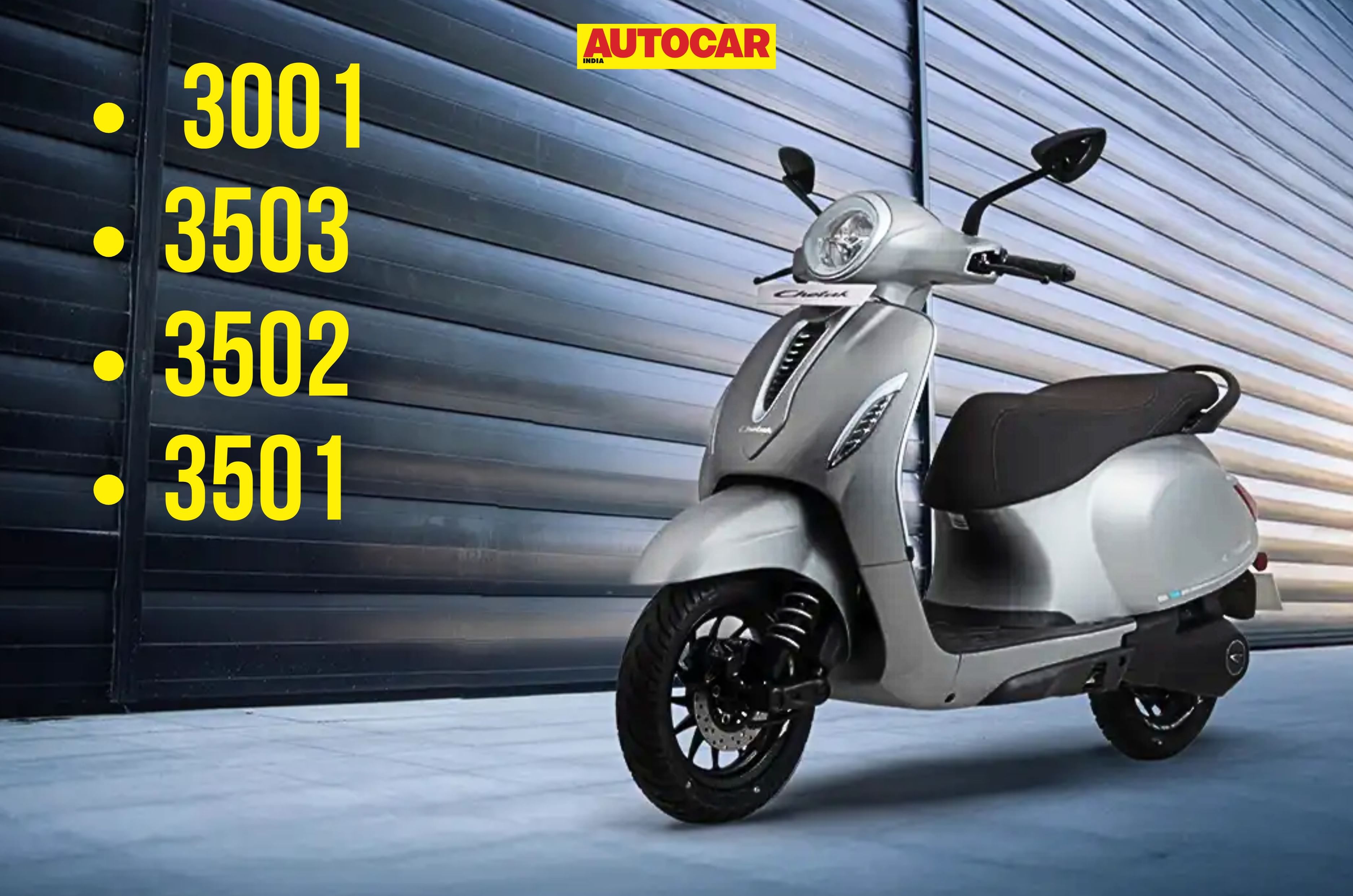
Bajaj brought back a household name when it resurrected the Chetak. Since then, the electric scooter has been received very well, and to keep that momentum going, Bajaj has been constantly evolving the product based on customer feedback and market research. However, with multiple variants and configurations now available, it’s easy for a prospective EV buyer to feel overwhelmed. So here’s a breakdown of all the battery packs the Chetak is available with, as well as their corresponding range and prices.
Bajaj Chetak line-up: differences in battery, range, charging time
The 35 series gets a 3.5kWh battery pack with a range of up to 153km
Much like its nomenclature – the 3001 and the 35 series – the Chetak line-up is divided into two battery configurations. The smallest of the lot is the 3001 variant, featuring a 3kWh battery pack and a 127km range. This variant is slated to replace the earlier 2903 variant.
Charging time for the 3001 has seen an improvement – the outgoing 2.9kWh pack reached 0-80 percent SOC in 4 hours, while the new 3kWh unit does it slightly quicker at 3 hours and 50 minutes. The 3001 comes with a 750W charger.
The larger 3.5kWh battery is available across three variants – 3501, 3502 and 3503. Both the 3501 and 3502 offer a claimed range of 153km, while the 3503 delivers 151km. The 3503 is limited to 63kph, whereas the other two can achieve speeds of 73kph.
Interestingly, the larger 3.5kWh pack doesn’t take longer to charge than its smaller 3kWh battery pack – in fact, it’s quicker due to the 900W charger supplied with these more expensive models. The 3502 and 3503 take 3 hours and 25 minutes for a full charge, while the top-spec 3501 is the fastest to charge at just 3 hours, thanks to a 950W on-board charger.
Bajaj Chetak line-up: differences in features
The 3501 gets a touch-operated TFT dash
The base 3001 and 3503 variants are similarly equipped, offering essential features like a negative LCD dash with mobile connectivity. These variants also display call/message alerts and get basic music control, reverse mode, hill-hold assist and guide-me-home lights with the optional TecPac priced from Rs 4,000. Both models use drum brakes at both ends.
In line with their higher pricing, the 3501 and 3502 step up with more premium features, including a TFT dash (which is a touchscreen unit on the top 3501) with app connectivity. Their TecPac adds overspeed alerts, guide-me-home lights, vehicle immobilisation and music controls. They’re also the only variants to get a front disc brake. Among them, the 3501 further stands out by offering keyless ignition and sequential indicators.
As with every Chetak EV, all variants feature an all-metal body, a rarity in today’s EV landscape.
Bajaj Chetak line-up: differences in price
The 3001 variant is priced right above the earlier 2903 variant
The 3001 is the most affordable variant, priced at Rs 99,900, and it sits between the iQube 2.2kWh at the lower end and the iQube 3.5kWh and Ather Rizta S on the higher end.
The 3503 is now priced at Rs 1.02 lakh, down from its earlier price of Rs 1.10 lakh. Stepping up, the 3502 comes in at Rs 1.22 lakh, placing it against the TVS iQube S 3.5kWh and Ather 450S. At the top of the range, the 3501 is priced at Rs 1.35 lakh, directly competing with the iQube ST 3.5kWh.
Also see:

